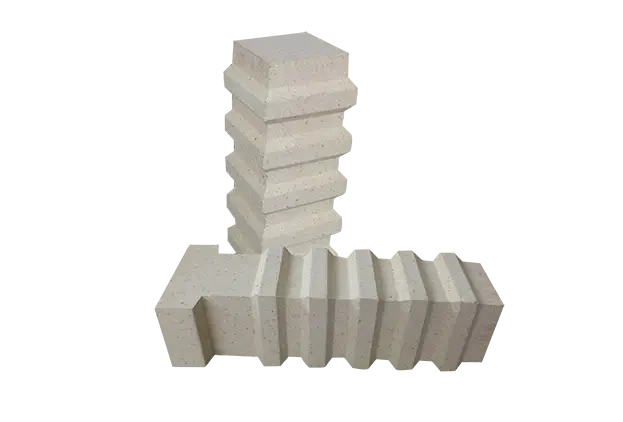
1. Top Chinese Manufacturer and Exporter
2. High quality and competitive price
3. Contact us to get free spec and price list
No matter where you buy from, understanding our prices first is the most correct choice
Whatsapp:
8615038278221E-mail:
info@rsrefractories.com
Description of Anchor Bricks
Anchorage brick, also known as hanging brick and anchor brick, is a new type of anchor brick for industrial furnace. The furnace top structure of top of electric furnace is supported by metal suspended bricks and firebricks. Therefore, the leakage of reactive gas and hot gas in furance will damage the metal hanger and result in roof collapse accidents. Industrial kiln and flue wall are made of inner lining, heat insulation layer and outer wall, lining is refractory brick, and the outer wall is used as ordinary sintered brick. There is a need for connection anchorage between these layers. The tensile strength and the flexural strength of the anchorage body are obviously improved. The stress generated at the groove is obstructed at the bar and can not be transferred continuously, so the anchorage brick of this structure is not easy to break.
Forming Process of Anchor Bricks
We adopts the dry pressed method which enables high dimensional accuracy and homogenous texture. A good balance between unique shapes and serial production, flexible firing and forming method enables us to produce customized shapes meeting individual client unique requirements with prompt delivery schedule.
| Items | Index | ||||
| SK-38 | SK-37 | SK-36 | SK-35 | SK-34 | |
| Al2O3 %,≥ | 75 | 65 | 55 | 48 | 42 |
| Cold Crushing Strength, MPa ≥ | 54 | 49 | 44 | 40 | 20 |
| Apparent Porosity, % ≤ | 23 | 23 | 22 | 22 | 26 |
| Refractoriness Under Load, °C ≥ | 1520 | 1500 | 1470 | 1420 | 1300 |
| Linear Change on Reheating, [1500°C×2h]% | -0.3 | -0.3 | -0.3 | [1500°C×2h] +0.1-0.4 | 0-0.5 |
| Refractoriness, °C ≥ | 1790 | 1790 | 1770 | 1750 | 1730 |
Applications of Anchor Bricks
Steel furnaces
Iron making furnaces
Glass kiln
Ceramic tunnel kiln
Cement kiln
Leave a message to get the price list for free